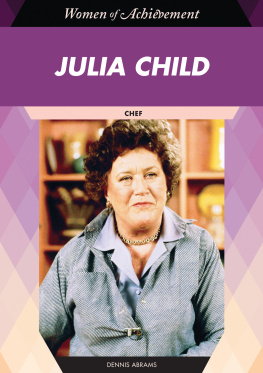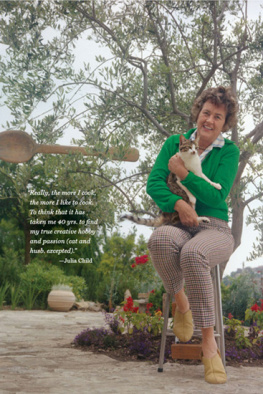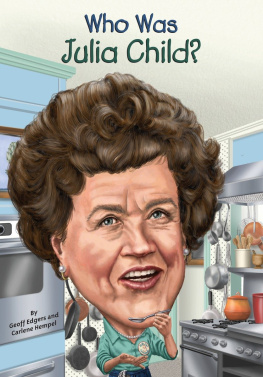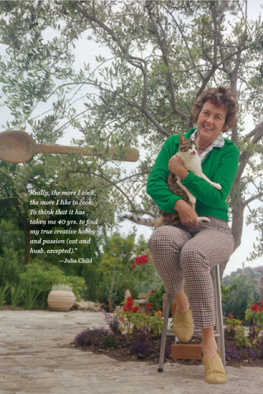Setting the Table for Julia Child

Setting the Table for Julia Child
Gourmet Dining in America, 19341961
DAVID STRAUSS

2011 The Johns Hopkins University Press
All rights reserved. Published 2011
Printed in the United States of America on acid-free paper
9 8 7 6 5 4 3 2 1
The Johns Hopkins University Press
2715 North Charles Street
Baltimore, Maryland 21218-4363
www.press.jhu.edu
Library of Congress Cataloging-in-Publication Data
Strauss, David, 1937
Setting the table for Julia Child : gourmet dining in America, 19341961 / David Strauss.
p. cm.
Includes bibliographical references and index.
ISBN-13: 978-0-8018-9773-3 (hardcover : alk. paper)
ISBN-10: 0-8018-9773-4 (hardcover : alk. paper)
1. Dinners and diningUnited StatesHistory20th century. 2. GourmetsUnited StatesHistory20th century. 3. Food habitsUnited StatesHistory20th century. 4. FoodSocial aspectsUnited StatesHistory20th century. 5. Gourmet. 6. Cookery, AmericanHistory20th century. 7. United StatesSocial life and customs19181945. 8. United StatesSocial life and customs19451970. I. Title.
GT2853.U5S77 2011
394.1'20973dc22 2010015272
A catalog record for this book is available from the British Library.
Frontispiece: Carving a suckling pig, La Confrrie des Chevaliers du Tastevin dinner, Chateau Clos de Vougeot, France, from La Confrrie des Chevaliers du Tastevin (Paris: ditions E.P.I.C., 1950), p. 81. La Confrrie des Chevaliers du Tastevin
Special discounts are available for bulk purchases of this book. For more information, please contact Special Sales at 410-516-6936 or .
The Johns Hopkins University Press uses environmentally friendly book materials, including recycled text paper that is composed of at least 30 percent post-consumer waste, whenever possible. All of our book papers are acid-free, and our jackets and covers are printed on paper with recycled content.
To my gourmet heirs:
Ben and Monique, Jesse, Annie and Guillermo, Leah and Matt Bon Appetit!
ACKNOWLEDGMENTS
Nearly half a century ago, well before food studies became a respectable academic discipline, Richard Hofstadter recounted his culinary adventures at Le Pavillon in New York to perplexed students in his Columbia University graduate history seminar. As it turned out, this was a pleasant, but not a frivolous, departure from the assigned topic. Asserting that there was no such thing as an American cuisine, Hofstadter sparked a spontaneous debate over whether hot dogs, hamburgers, and steaks met the criteria for such a culinary regime. That debate, which has been percolating in my brain and whetting my appetite ever since, planted the seed from which this book has grown. It addresses, as our seminar did, the contrast between the relatively unstable foodways of the United States and the more highly articulated French dining regime. Further, it calls to mind the many ways, small and large, that Richard Hofstadters innovative spirit continues to shape the writing of history.
While no one can recreate the taste of past gourmet dinners, observers accounts, menus, recipes, and catalogues of specialty food and wine stores, as well as the papers of leading food writers, publishers, and activists in gourmet societies, provide useful information about those occasions. The following institutions have generously opened their collections of such documents to me: Les Amis dEscoffier (Boston, Chicago, and New York chapters); the Boston Globe Library; Bowling Green State University; the Chicago History Museum; La Confrrie des Chevaliers du Tastevin (New Orleans, New York, and Washington, D.C., chapters); the Enoch Pratt Free Library; Houghton Library; the International Wine and Food Society (Boston, Chicago, London, and New York chapters); Iowa State University; the John Hartman Center at Duke University; Kalamazoo College; the Kalamazoo Public Library; the Michigan State University Library; the Missouri Historical Society; Oklahoma State University Library; Princeton University Library; the Schlesinger Library; the Smith College Library; the Society of Medical Friends of Wine; the Stanford University Library; the Straus Historical Society; the University of California Libraries at Berkeley, Davis, and Los Angeles; the University of Pennsylvania Library; the University of Texas Library; Western Michigan University Archives; and the Williams Research Center, New Orleans.
Much of the material for writing a history of gourmet dining is in the hands and minds of individuals who have been active in gourmet dining societies, in writing about food and wine, or in maintaining collections of useful materials. I am grateful to the following for providing recollections and documents on different aspects of the topic: Victor Atkins, Edwin James Blair, Cameron Brown, Sharon Carlson, Narcisse Chamberlain, Jacques Chevignard, Louis-Marc Chevignard, Christine Crawford-Oppenheimer, John Danza, Lynn Eaton, Rebecca Gray, James Hammond, Louis Hatchett, William Hoffmann, Sarah Hutcheon, Marilyn Mellowes, Martin Olliff, Joan Reardon, Ruth Slechta, Dan Strehl, Charles Turgeon, Gail Unzelman, Barbara Ketcham Wheaton, and Julius Wile. (For telephone interviews, see the Essay on Sources.)
Special thanks go to Lee Langan, archivist of the San Francisco Wine and Food Society, who initially shared with me his digital record of the Societys menus and later scanned selected items from the collection to be reproduced in the color gallery.
At Kalamazoo College, Kathryn Lightcap scanned a number of images for the manuscript; Marigene Arnold, Gail Griffin, Franklin Presler, and Bob Stauffer have shared their thoughts in ongoing conversations about the changing American dietary regime, while David Barclay and Charlene Boyer-Lewis have made helpful suggestions for revising the manuscript. Special thanks to Paul Smithson, who sharpened my grasp of fine printing, and to Billie Fischer for interpreting Italian Renaissance motifs. For his reflections on the conceptual issues underlying the treatment of gourmet dining, I am grateful to Bob Stauffer.
Scholars in the burgeoning field of food history have also read one or more chapters of the manuscript. Thanks to Amy Bentley, Jan Langone, Harvey Levenstein, Anne Mendelson, Jessamyn Neuhaus, Thomas Pinney, Laura Shapiro, and Amy Trubek for their helpful advice. Christopher Endys critique of has helped me to understand the influence of Gourmet guidebooks on postWorld War II tourism.
At the Johns Hopkins University Press, thanks to Debby Bors, Bob Brugger, Jeremy Horsefield, and Josh Tong, whose careful reading of the manuscript much improved it.
I have drawn inspiration from two conferences on food history that have reflected on current and future directions for research in the field: Food and Drink in Consumer Societies (Hagley Museum and Library, November 1999) and Women, Men, and Food: Putting Gender on the Table (Radcliffe Institute for Advanced Study, April 2007). It is a pleasure, as well, to acknowledge the Radcliffe Institute for Advanced Studies for awarding me a Schlesinger Library Research Support Grant.
Two individuals have supported my project from the outset and have read every word of the manuscript in its entirety at least once. John Lankford has been unstinting in his support of my efforts to chart new territory in the history of food, while insisting that the story be told in a clear and lively fashion. My wife, Dhera, has purged early drafts of egregious errors, assisted me in selecting the illustrations for the text, and supplied the title for the book. Equally important, she has provided a steady flow of gourmet cooking to fuel the project and inspire the imagination.
Next page







